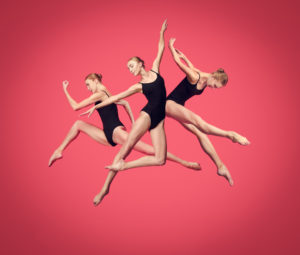In addition to proportion, balance, and symmetry, Laban identified order, kinship, and unity of form as elements of movement harmony.
Order is particularly important in spatial sequences. For example, if a series of continuous movements were to be filmed, then cut apart and randomly spliced back together, a dream-like sequence would result, full of unexpected jumps, overlaps, and repetitions. According to Laban, a movement makes sense only if “it progresses organically,” with phases following in a natural order of directional change.
Order is also important in effort sequences, but here the sequencing is governed by kinship or the similarity of component effort qualities. Laban writes: “Harmony exists between things which have a certain relation to one another.” Contrasting effort combinations, such as floating and punching “can only become harmonized by intermediary steps leading from one of the opposites to the other.”
Unity of form is achieved both through the relationship of part to part, and also by the relationship of part to the whole. Order governs the relationship of the directions of spatial change to one another, while kinship governs the harmonious sequencing of effort qualities. Laban also found “affinities” between spatial directions and effort qualities, noting that “there is a fundamental correlation between efforts and shapes.”
Laban embedded these elements of harmony in the Choreutic and Eukinetic sequences he designed. Experience these elements of harmony for yourself in the upcoming MoveScape Center workshop, Movement Harmony ALIVE.
